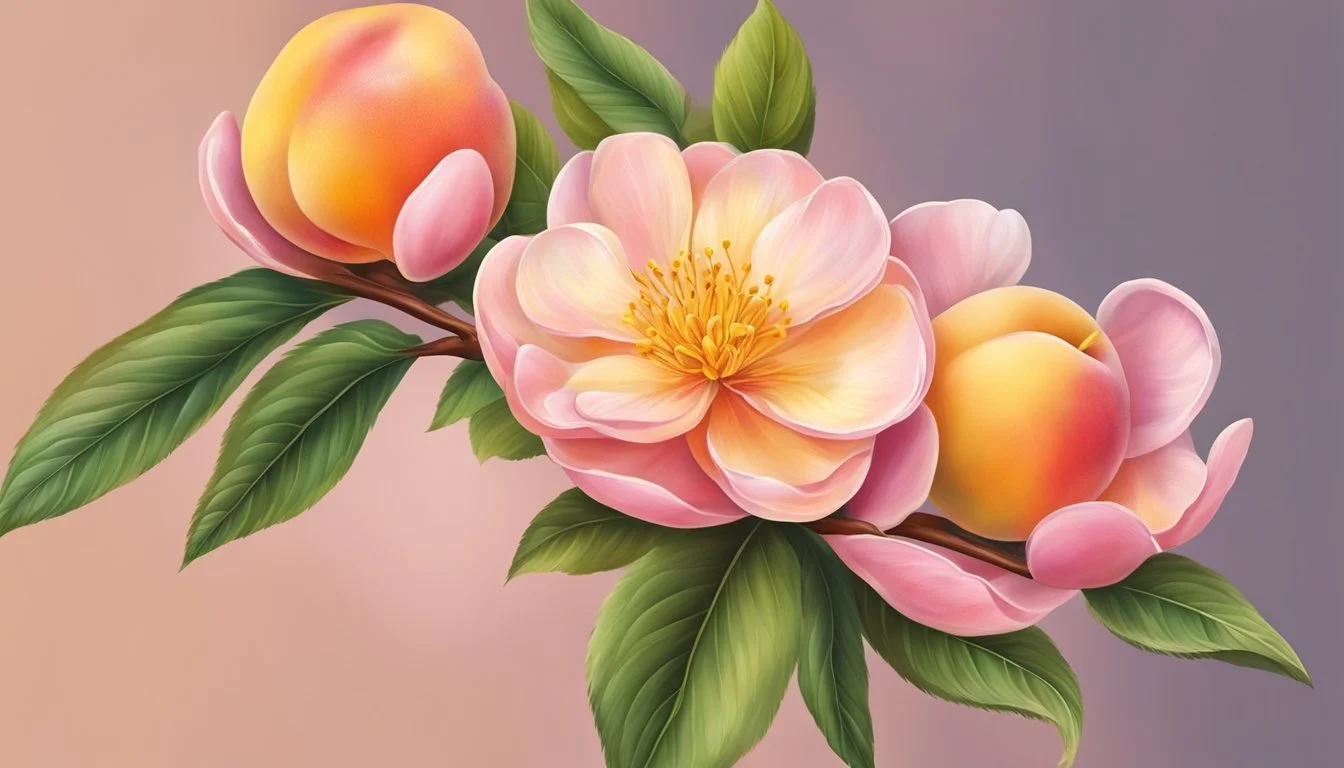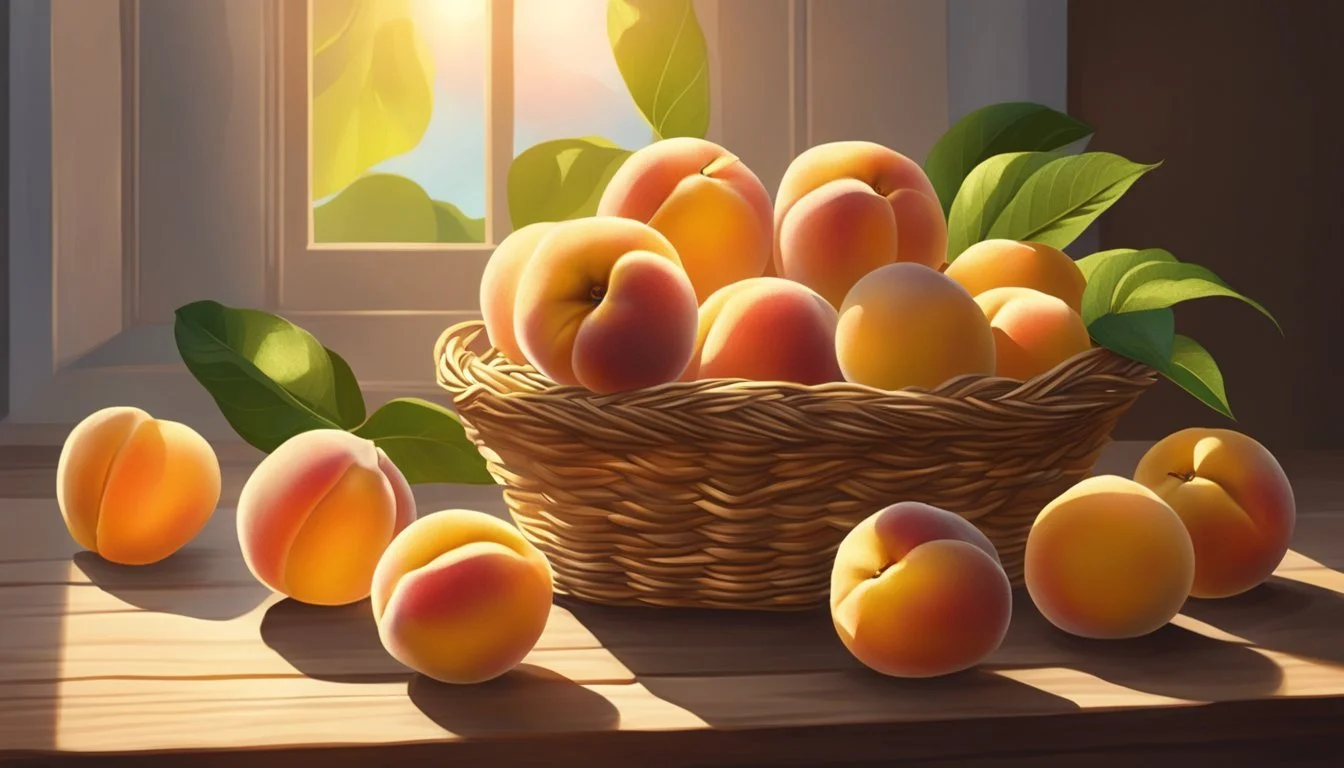How to Tell If Loring Peaches Are Ripe
Signs of Perfect Ripeness
Determining the ripeness of Loring peaches is paramount for both growers and consumers seeking to enjoy this succulent fruit at its peak flavor and texture. Loring peaches, recognizable by their vibrant red and yellow skin, are a mid-season varietal known for their juicy and sweet profile. To assess ripeness, one should observe the color, feel, and aroma of the peaches. A ripe Loring peach will typically exhibit a deep yellow undertone with minimal green around the stem, signaling that it has reached optimal sweetness.
Harvesting Loring peaches requires a gentle hand to avoid bruising, taking note to pick the fruit when it's ripe as they do not ripen significantly after being picked. Once harvested, proper storage is crucial to maintain their freshness and extend enjoyment. Loring peaches should be stored at room temperature if they are to be eaten soon or refrigerated to slow down the ripening process if needed. Understanding these factors ensures that each Loring peach is savored at its best, providing a delectable experience that encapsulates the essence of summer fruit.
Key Takeaways
Observing color, feel, and scent is essential to identify ripe Loring peaches.
Picked at peak ripeness, Loring peaches should be harvested gently to prevent bruising.
Proper storage plays a key role in maintaining the freshness of Loring peaches post-harvest.
Identifying Ripe Loring Peaches
To determine the ripeness of Loring Peaches, they recommend closely observing color and firmness, as well as utilizing sensory cues from smell and taste. These methods provide a reliable approach to identify when the fruit has reached its peak ripeness.
Using the Senses of Sight and Touch
The color of a ripe Loring Peach should exhibit a dark yellow hue, particularly around the stem where it is least exposed to sunlight. In contrast, portions that receive more sunlight should have a reddish tint. Using touch, one should feel for a slight give in the skin, indicating proper ripeness without the excess softness associated with overripeness. The skin should show no traces of green, and a ripe peach's firmness will yield softly under gentle pressure.
Scent and Aroma Indicators
A ripe Loring Peach releases a noticeable sweet aroma. Its scent is a reliable indicator as it becomes more pronounced with ripeness. One should expect the peach to emit a sweet, peachy smell that is not overpowering but pleasant. No detectable scent or an overly pungent odor may imply immaturity or past-peak condition, respectively.
Taste and Texture Experience
The flavor profile of Loring Peaches when ripe combines sweetness with a hint of acidity, creating a well-balanced taste. In terms of texture, ripe peaches should feel juicy and tender to the bite, not mushy or hard. Testing a small piece can confirm ripeness, as the optimal taste experience relies on both the fruit's sweetness and its delicate, enjoyable texture.
Harvesting Techniques
When harvesting Loring Peaches, timing and careful handling are paramount to ensure the fruit is picked at peak ripeness and without damage. Proper technique can significantly affect both the quality and taste of the peaches.
Prime Harvesting Times
Loring Peaches reach optimal ripeness during summer, typically ripening about 22 days after the Red Haven variety. To know when the peaches are ready for harvest, they should see full sun throughout the day which aids in developing a characteristic orange-red blush. Also, one should no longer see green undertones on the fruit skin, indicating that peaches are mature and sweet enough for picking.
Sun Exposure: Full sun helps develop the right color.
Color Indicator: Orange-red blush without green undertones signals readiness.
Picking and Handling Care
To harvest Loring Peaches, it is important to use gentle techniques. The peach trees should be handled carefully; branches and arms must not be damaged in the process. To pick a peach, one should roll the fruit upward with a twist rather than pulling directly, which helps avoid bruising.
Tree Care: Avoid breaking branches during picking.
Peach Picking Pointers:
Roll and Twist: Gently roll the fruit upwards off the branch.
Avoid Bruising: Handle the peaches with care to prevent bruises.
Storing and Ripening Peaches
Choosing the right method to store and ripen Loring peaches can greatly affect their taste and longevity. This guide provides specific techniques to ensure peaches reach their optimal ripeness and are preserved in the best possible way.
At-Home Ripening Methods
For those looking to ripen peaches at home, the use of a paper bag is effective. Place peaches inside the bag at room temperature and check daily for softness. Peaches emit ethylene gas naturally, which is trapped by the bag and speeds up ripening. To further hasten the process, one can include an apple in the bag, as apples also release ethylene gas.
Preventing Overripening
Once peaches reach their desired ripeness, they should be moved to the refrigerator to slow the ripening process. Store them on a single layer in their original container or a shallow bowl to avoid bruising. If peaches show signs of wrinkles or shriveled skin, they are likely overripe. The fridge can help preserve ripe peaches for an additional 2-3 days.
Long-Term Storage Solutions
For long-term preservation, freezing is the best option. Peaches should be sliced, treated with lemon juice to prevent browning, and spread on a parchment-lined baking sheet to freeze solid. They can then be transferred to a resealable freezer bag and kept frozen for up to three months. Canning is another viable method for storing ripe peaches, allowing them to be enjoyed even off-season.
Enjoying Loring Peaches
When Loring peaches reach peak ripeness, they present a sweet and fragrant opportunity for culinary creativity or simple snacking enjoyment. Their balance between sweetness and firmness makes them adaptable to a range of dishes and eating experiences.
Culinary Uses
Loring peaches, when ripe, are a versatile ingredient in the kitchen. They can be the star of a peach cobbler, where their flavor intensifies during baking, complemented by spices such as cinnamon and nutmeg. Their firmness holds up well in the cooking process, ensuring that the peach slices maintain their integrity within the dessert.
Here are specific ways to include Loring peaches in recipes:
Salsa: Dice ripe peaches for a sweet twist on traditional tomato salsa.
Salads: Add thinly sliced peaches to a fresh produce salad for a sweet contrast.
Grilling: Grill peach halves for a caramelized flavor that pairs with both savory and sweet dishes.
Simple Snacking Tips
For those who enjoy the simple pleasures of a fresh peach, here are some tips to enhance the snacking experience:
Inspect for Ripeness: Select peaches with a deep yellow or creamy background color with a red blush. The area around the stem should not have green tinges, indicating full ripeness.
Sensory Check: A ripe Loring peach will emit a sweet aroma and yield slightly to gentle pressure.
Storage: To best enjoy the sweetness and texture of Loring peaches, eat them shortly after they reach full ripeness or store them in the refrigerator to slow down the softening process.
These delicious fruits can also be muddled into a refreshing cocktail for a seasonal twist, or simply eaten as-is, savoring the burst of juicy sweetness with every bite.
Understanding Peach Varieties
When exploring the world of peaches, one must discern between the two main types: freestone and clingstone. These categories significantly influence a peach's use in the kitchen, from canning to baking.
Freestone vs Clingstone
Freestone peaches are characterized by the stone (pit) that easily separates from the flesh, making them ideal for consumption and culinary uses where pit removal is necessary. In contrast, clingstone peaches have fruit flesh that clings to the pit, which can make them more challenging to work with when peeling or slicing. However, clingstone peaches are often sweeter and juicier, making them favorable for eating fresh or for certain recipes where the peaches are used whole.
Peach Types and Their Uses
Peaches can be broadly categorized into their utility in the kitchen:
Canning: Clingstone varieties are typically preferred due to their enhanced sweetness and juice content, which help preserve the peach flavor.
Baking and Cooking: Freestone peaches are ideal for baking pies, cobblers, and other desserts because they are easier to slice and maintain their shape well during the cooking process.
Understanding the type and characteristics of peach one is dealing with is crucial for the intended culinary use. Freestone peaches tend to be dominant in the market for their versatility, while clingstone peaches are treasured for recipes where the peach's flavor is the star.
Cultivation and Care of Peach Trees
Proper cultivation and care are pivotal in growing healthy peach trees that can deliver optimal yields. This includes understanding the fundamentals of planting, routine tree maintenance, and practices that enhance the tree's ability to produce abundant, quality fruit.
Planting Basics
Location: Peach trees thrive in a location with full sun, which means a minimum of six hours of direct sunlight per day is essential. They require well-drained, loamy soil rich in organic matter.
Planting Time: Plant peach trees in early spring. The ideal soil temperature should be warm enough to promote root growth.
Dig a hole that is twice as wide and the same depth as the root ball.
Position the tree so that the graft union is approximately two inches above the soil level.
Fill the hole with soil, tamping down gently to remove air pockets.
Tree Maintenance
Watering: Consistent watering is crucial, especially in the first few years. Provide about 1 inch of moisture per week through rainfall or irrigation, ensuring the entire root zone is reached.
Pruning: Annually prune peach trees to remove any dead or overcrowded branches. This maintains their size—no more than six to ten feet tall—and allows sunlight to reach lower branches for flower and fruit development.
Fertilizing: Apply fertilizer early in the spring before new growth begins. A balanced 10-10-10 fertilizer can be used, adjusting the amount according to the tree's age and size.
Optimizing Yield
To maximize yield, regular maintenance and careful monitoring of the peach trees are required. Eliminate any dark spots or diseased wood promptly to prevent spread.
Sun Exposure: Regularly prune to keep the tree's canopy open, ensuring that each branch receives ample sun exposure, which is directly linked to fruit production.
Thinning Fruit: If the tree is overproducing, thin the fruit early in the season to avoid overburdening the branches and to promote larger, healthier peaches upon maturity.
Additional Considerations
When assessing the ripeness of Loring peaches, gardeners and consumers alike must consider several subtle indicators beyond the basic checks for color and feel. It is important to recognize these signs to ensure the selection of the best fruit.
Underripe Peaches: They may still have a hue of green on their skin, signaling that they have yet to fully mature. They are firmer to the touch and lack the sweet aroma characteristic of ripe peaches.
Sweet Aroma: A ripe Loring peach emits a sweet scent that intensifies as the fruit reaches peak ripeness. An absence of this sweet aroma often indicates that the peach is not ready for consumption.
Bruising and Dark Spots: Loring peaches bruise easily when overripe. Dark spots and excessive softness are signs the fruit may be past its prime. Handle the peaches gently to avoid damaging the delicate skin.
When inspecting a Loring peach, observe with care:
Aspect: Color
Underripe: Greenish tinge
Perfectly Ripe: Uniform yellow with a healthy blush
Overripe: Dark spots, overly deep yellow
Aspect: Touch
Underripe: Firm
Perfectly Ripe: Yields slightly to gentle pressure
Overripe: Soft, with areas of mushiness
Aspect: Scent
Underripe: No discernible aroma
Perfectly Ripe: Distinct sweet aroma
Overripe: May smell fermented
Proper handling and assessment techniques help to preserve the fruit's integrity and ensure a delightful flavor profile characteristic of the Loring peach. Practices such as gentle squeezing and using one's sense of smell can significantly aid in choosing peaches at the perfect stage for consumption or culinary use.





